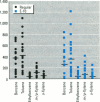Abstract
Although most people are thought to receive their highest acute exposures to gasoline while refueling, relatively little is actually known about personal, nonoccupational exposures to gasoline during refueling activities. This study was designed to measure exposures associated with the use of an oxygenated fuel under cold conditions in Fairbanks, Alaska. We compared concentrations of gasoline components in the blood and in the personal breathing zone (PBZ) of people who pumped regular unleaded gasoline (referred to as regular gasoline) with concentrations in the blood of those who pumped an oxygenated fuel that was 10% ethanol (E-10). A subset of participants in a wintertime engine performance study provided blood samples before and after pumping gasoline (30 using regular gasoline and 30 using E-10). The biological and environmental samples were analyzed for selected aromatic volatile organic compounds (VOCs) found in gasoline (benzene, ethylbenzene, toluene, m-/p-xylene, and o-xylene); the biological samples were also analyzed for three chemicals not found in gasoline (1,4-dichlorobenzene, chloroform, and styrene). People in our study had significantly higher levels of gasoline components in their blood after pumping gasoline than they had before pumping gasoline. The changes in VOC levels in blood were similar whether the individuals pumped regular gasoline or the E-10 blend. The analysis of PBZ samples indicated that there were also measurable levels of gasoline components in the air during refueling. The VOC levels in PBZ air were similar for the two groups. In this study, we demonstrate that people are briefly exposed to low (ppm and sub-ppm) levels of known carcinogens and other potentially toxic compounds while pumping gasoline, regardless of the type of gasoline used.
Full text
PDF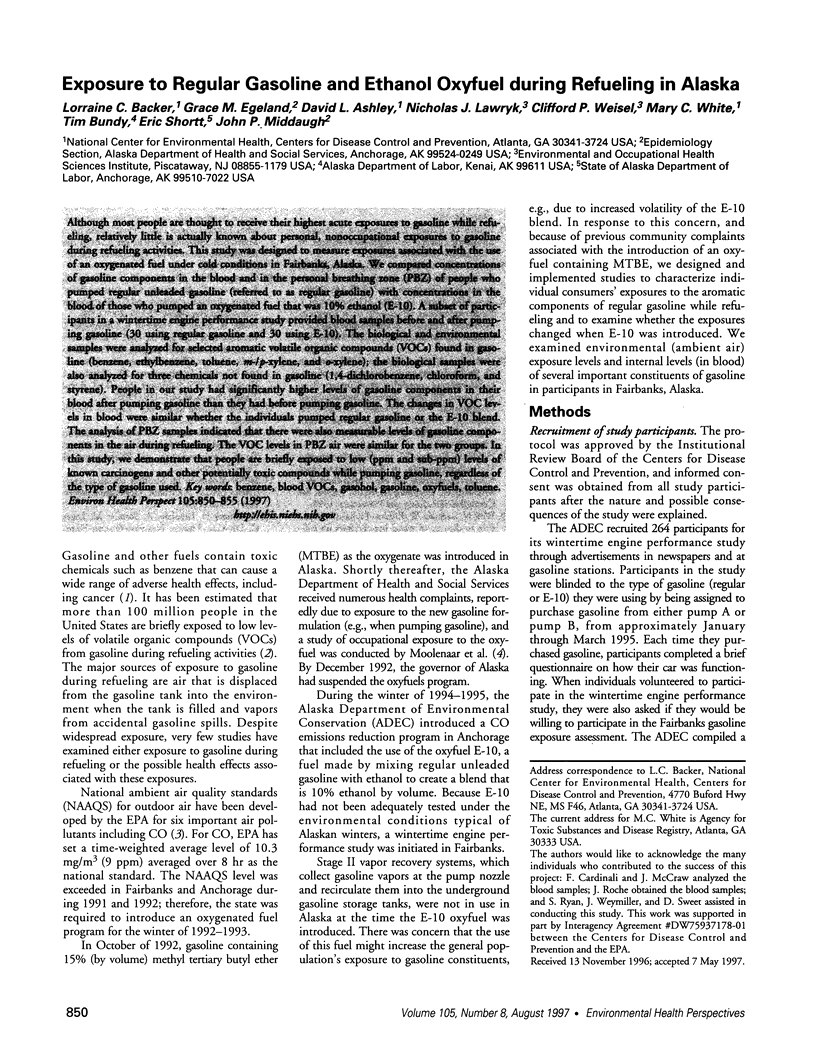
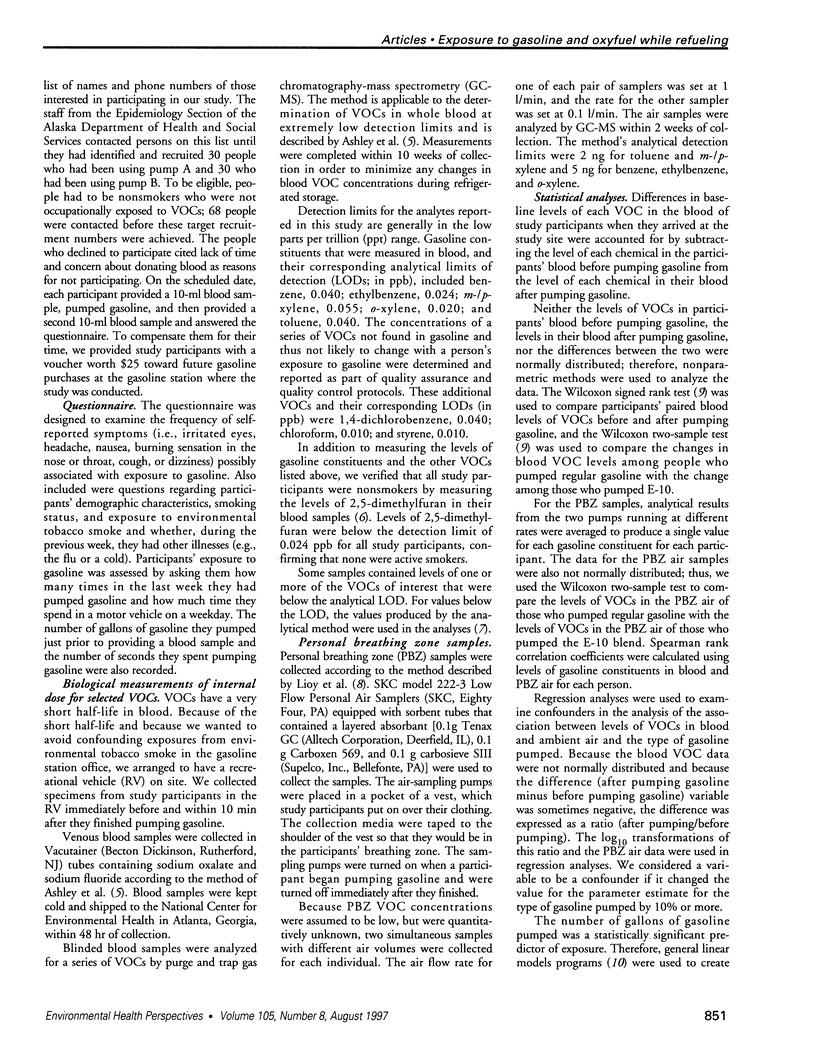
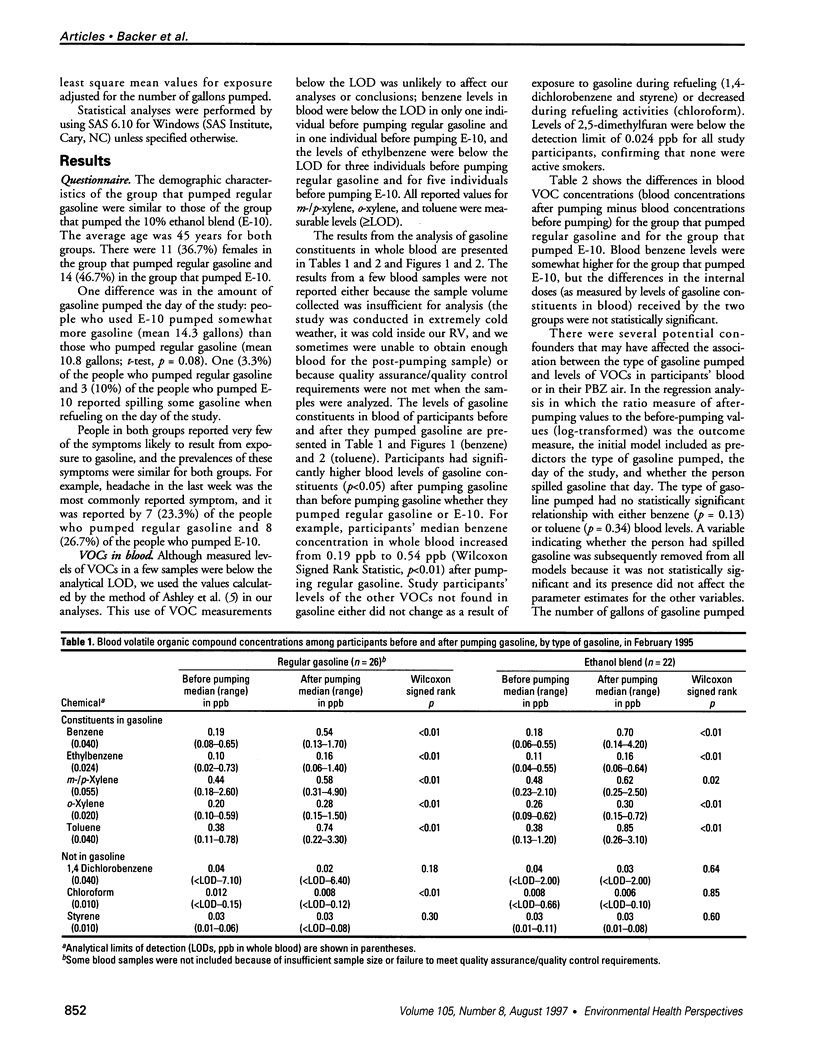
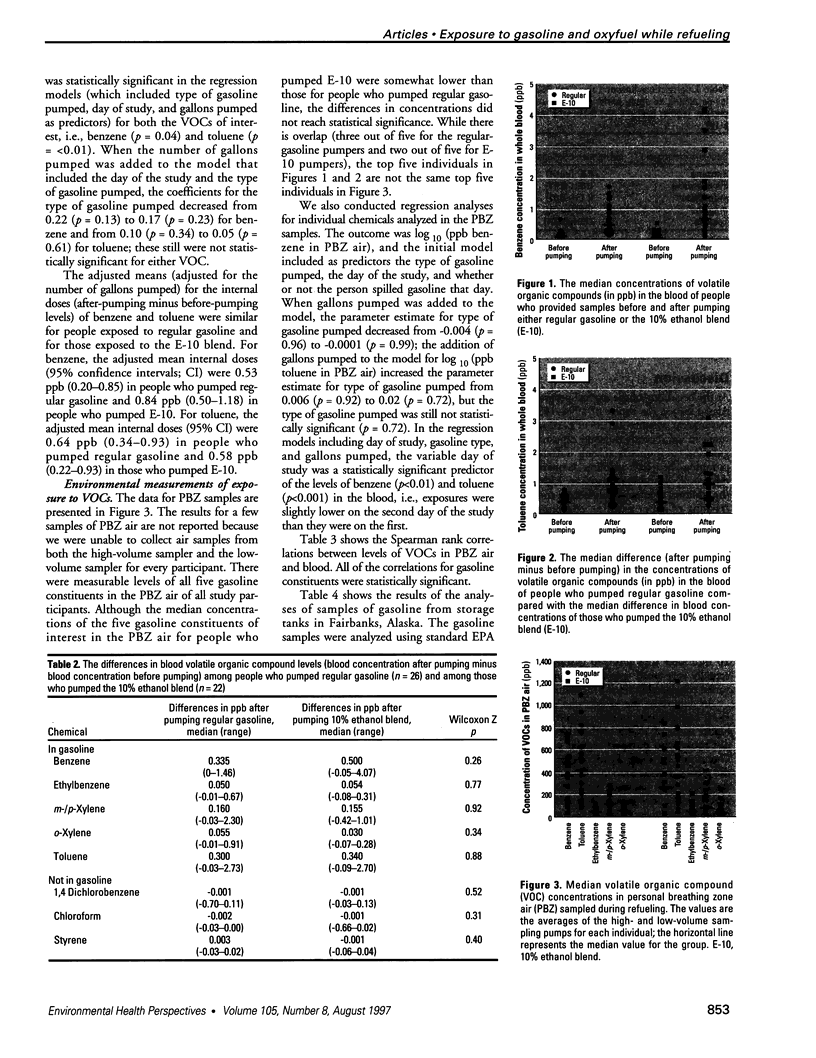
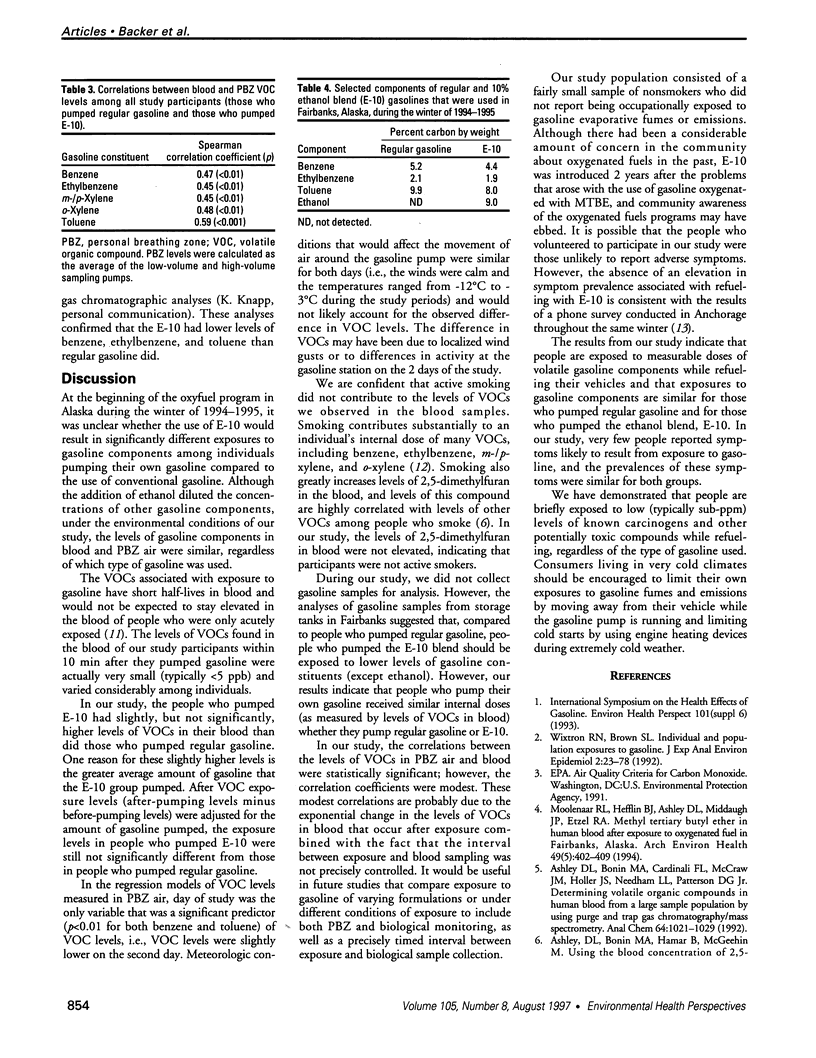
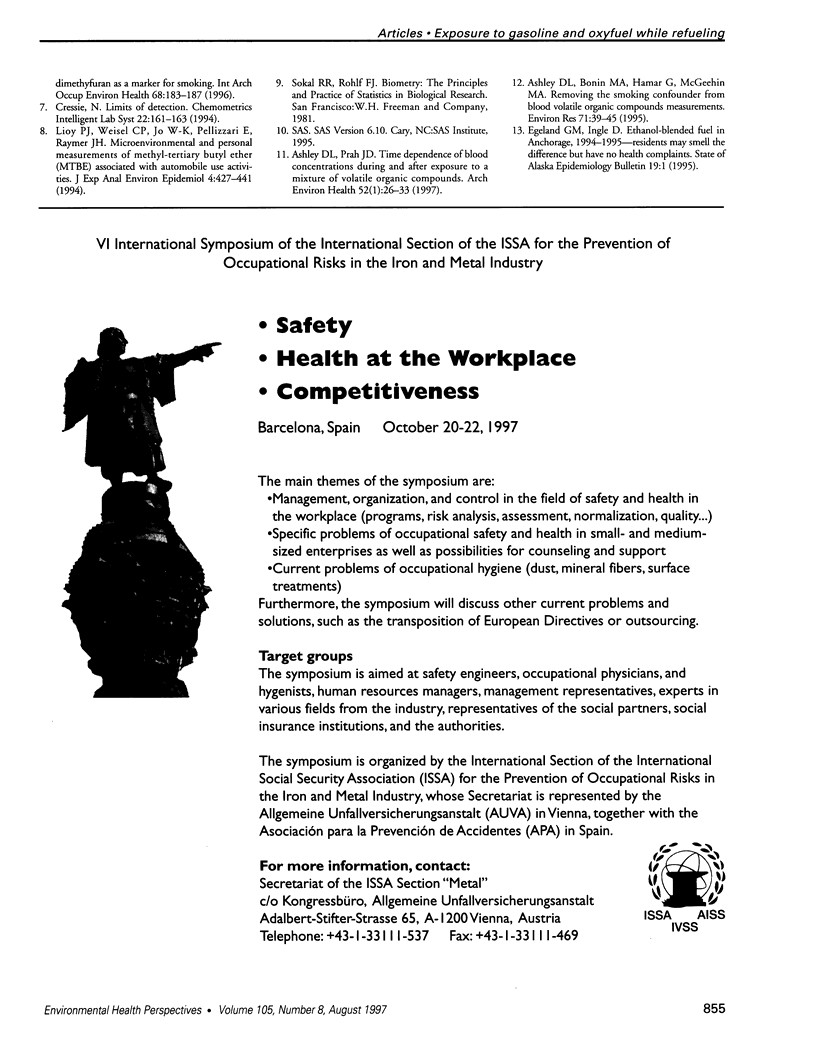
Images in this article
Selected References
These references are in PubMed. This may not be the complete list of references from this article.
- Ashley D. L., Bonin M. A., Cardinali F. L., McCraw J. M., Holler J. S., Needham L. L., Patterson D. G., Jr Determining volatile organic compounds in human blood from a large sample population by using purge and trap gas chromatography/mass spectrometry. Anal Chem. 1992 May 1;64(9):1021–1029. doi: 10.1021/ac00033a011. [DOI] [PubMed] [Google Scholar]
- Ashley D. L., Bonin M. A., Hamar B., McGeehin M. A. Removing the smoking confounder from blood volatile organic compounds measurements. Environ Res. 1995 Oct;71(1):39–45. doi: 10.1006/enrs.1995.1065. [DOI] [PubMed] [Google Scholar]
- Ashley D. L., Prah J. D. Time dependence of blood concentrations during and after exposure to a mixture of volatile organic compounds. Arch Environ Health. 1997 Jan-Feb;52(1):26–33. doi: 10.1080/00039899709603796. [DOI] [PubMed] [Google Scholar]
- Moolenaar R. L., Hefflin B. J., Ashley D. L., Middaugh J. P., Etzel R. A. Methyl tertiary butyl ether in human blood after exposure to oxygenated fuel in Fairbanks, Alaska. Arch Environ Health. 1994 Sep-Oct;49(5):402–409. doi: 10.1080/00039896.1994.9954993. [DOI] [PubMed] [Google Scholar]
- Wixtrom R. N., Brown S. L. Individual and population exposures to gasoline. J Expo Anal Environ Epidemiol. 1992 Jan-Mar;2(1):23–78. [PubMed] [Google Scholar]





